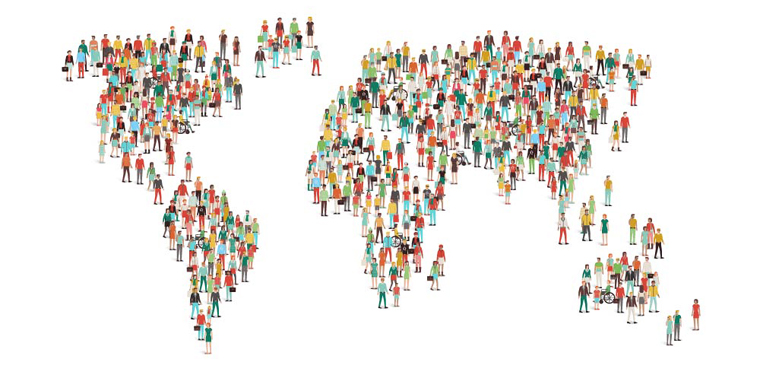December 7, 2016 — Good news: more people across the globe have improved access to safe water and sanitation. Bad news: air quality is a growing problem in lower-income countries. The Population Reference Bureau’s 2016 World Population Data Sheet, released in August, offers valuable insights into not only current and projected demographic measures, but also health, energy and environment trends around the world.
The report predicts that Africa’s population will reach 2.5 billion by 2050, accounting for 54 percent of the total world population growth. However, Asia will remain the most heavily populated region with a gain of nearly 900 million (36 percent of global population growth), and India will replace China as the nation with the most people. The number of people in the Americas is slated to rise by only 223 million, and Europe will experience a slight decline of 12 million.
Significant to managing health and environmental concerns, the report projects that the combined population of the world’s least developed countries will double by 2050 to 1.9 billion. But these people are on the move, and migration could have an unpredictable impact on regional population estimates and resource management. Africa, for example, is expected to more than double in population by 2050 but is also expected to lose more people to emigration than it gains from immigration. Europe is currently absorbing many of these migrants. As a result, European nations may not see the anticipated population decline and could face increased environmental and health challenges.
Air quality is becoming a more pressing issue as global population increases, particularly in less developed regions. According to the report, the highest national-level concentrations of fine particles of airborne dust, dirt and soot occur in middle-income nations like China and Bangladesh, where pollution control measures are not keeping up with industrial growth. Although particulate air pollution is dropping in higher income countries, it still exceeds World Health Organization target levels.
A focus on water over the past 25 years has improved access to safe drinking water and basic sanitation in many parts of the world. The data sheet reports that 91 percent of the global population now has piped water available close to home. Progress in sanitation is also reported; however, more than 2.4 billion people still lack access to basic sanitation services.
The report paints a fascinating country-by-country picture of carbon emissions, access to electricity and use of renewable energy. Annual carbon emissions increased 60 percent globally between 1992 and 2013, with individual country changes ranging from a 280 percent increase in China to a 57 percent reduction in Ukraine. The United States held increases to under 6 percent, yet remains second only to China in total carbon emissions. Access to electricity varied from 100 percent in more developed countries to less than 10 percent in some of the least developed countries. Percent of energy coming from renewables spanned from zero to 97 with a global average of 18 percent. Country breakdowns are also presented for several other demographic, health and environmental metrics, including life expectancy at birth and percent of land under protected status.
The 2016 World Population Data Sheet is accessible in both print and interactive digital formats for further exploration of the balance between providing for human needs and managing the natural resources on which people depend. ![]()
Ensia shares solutions-focused stories free of charge through our online magazine and partner media. That means audiences around the world have ready access to stories that can — and do — help them shape a better future. If you value our work, please show your support today.
Yes, I'll support Ensia!
